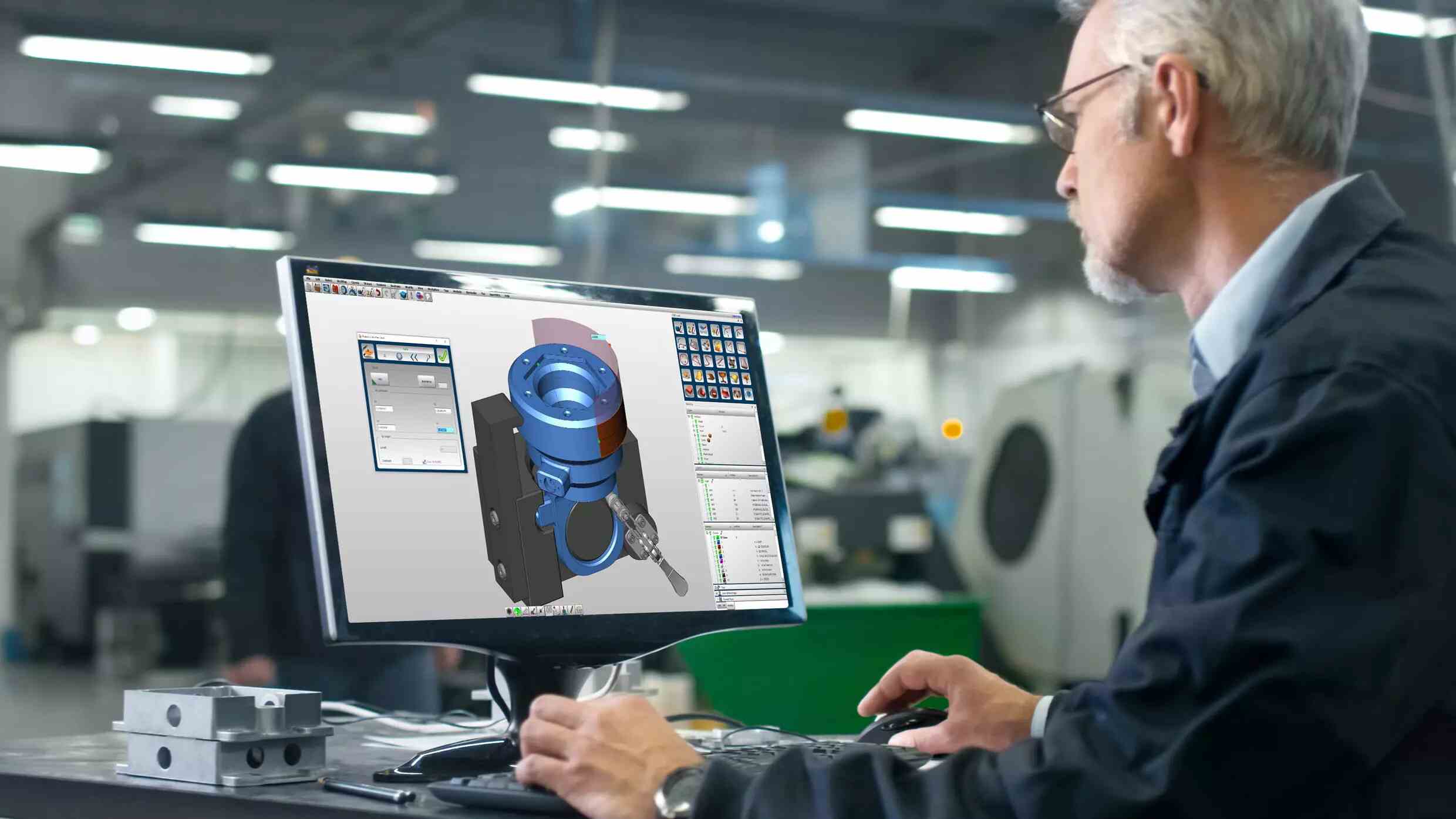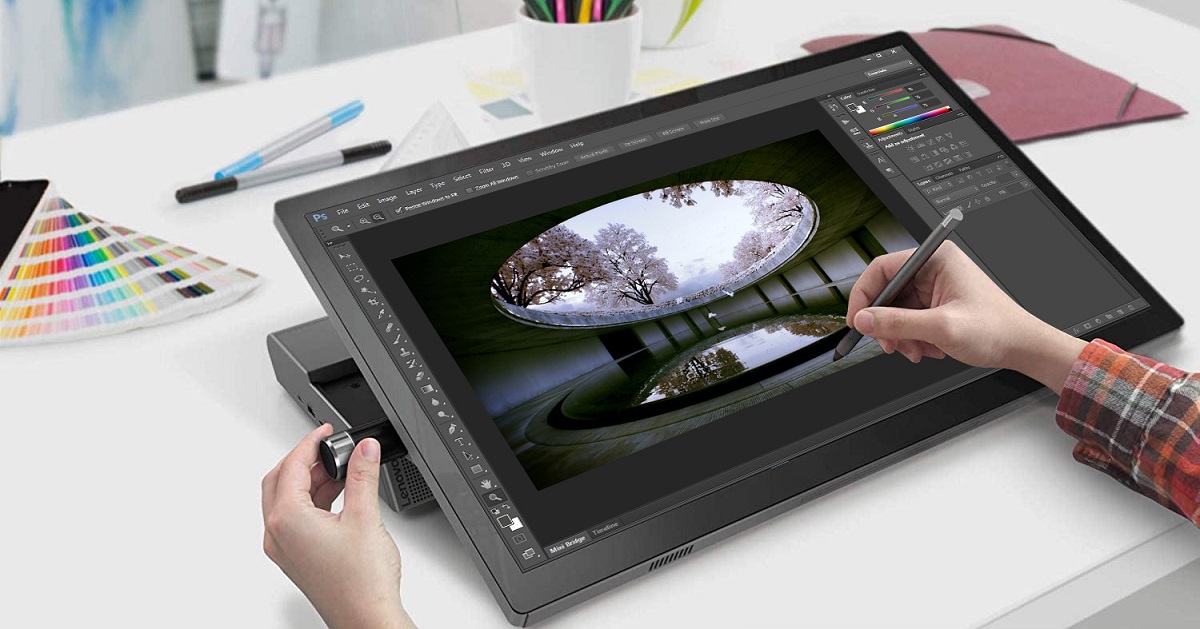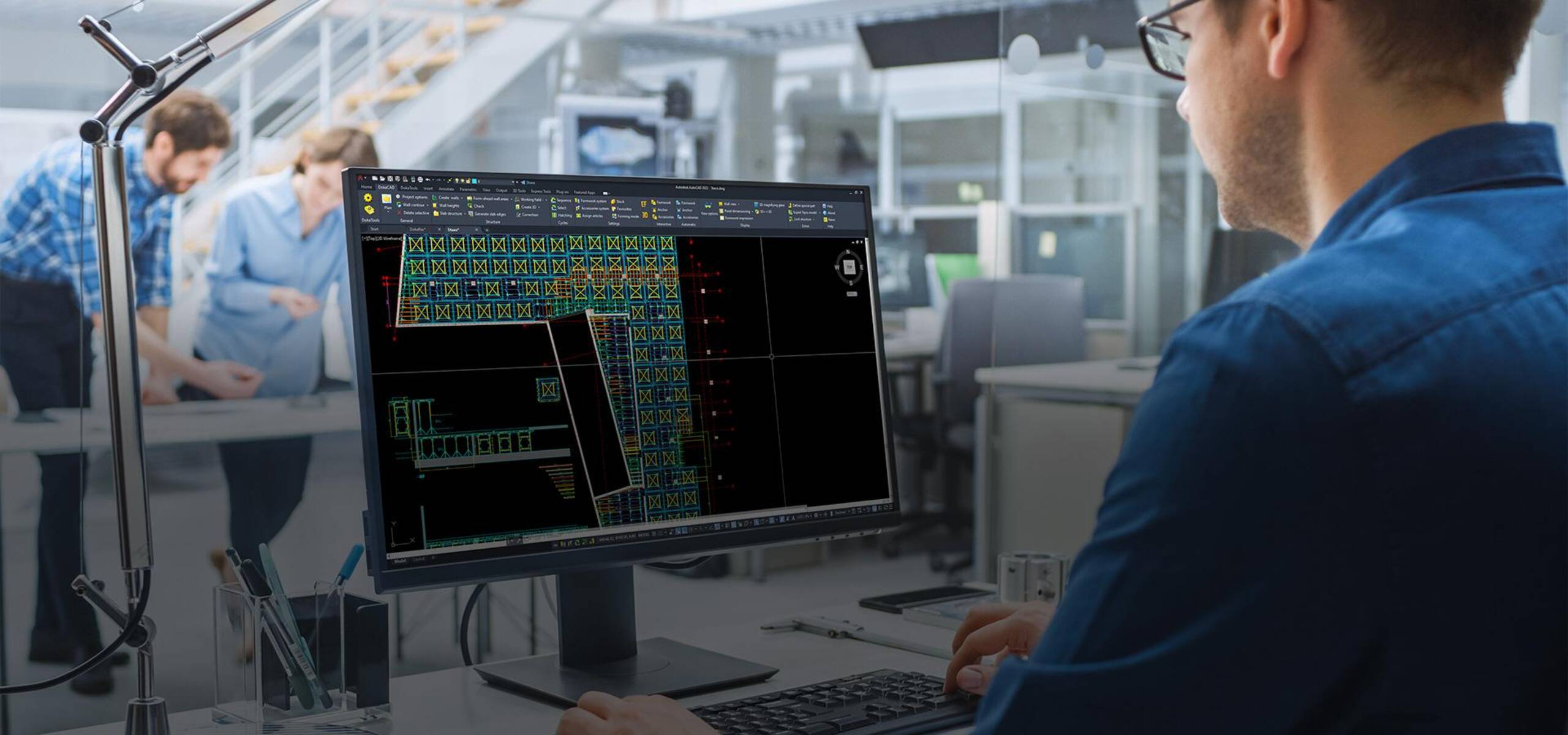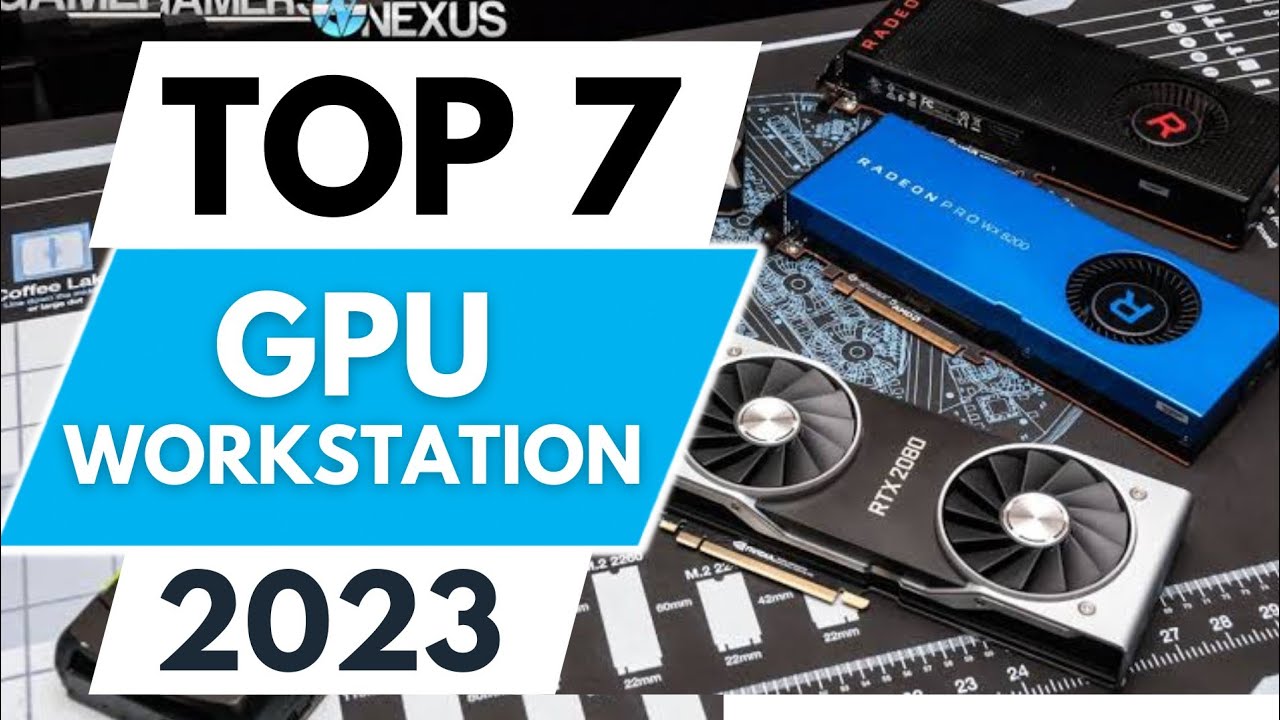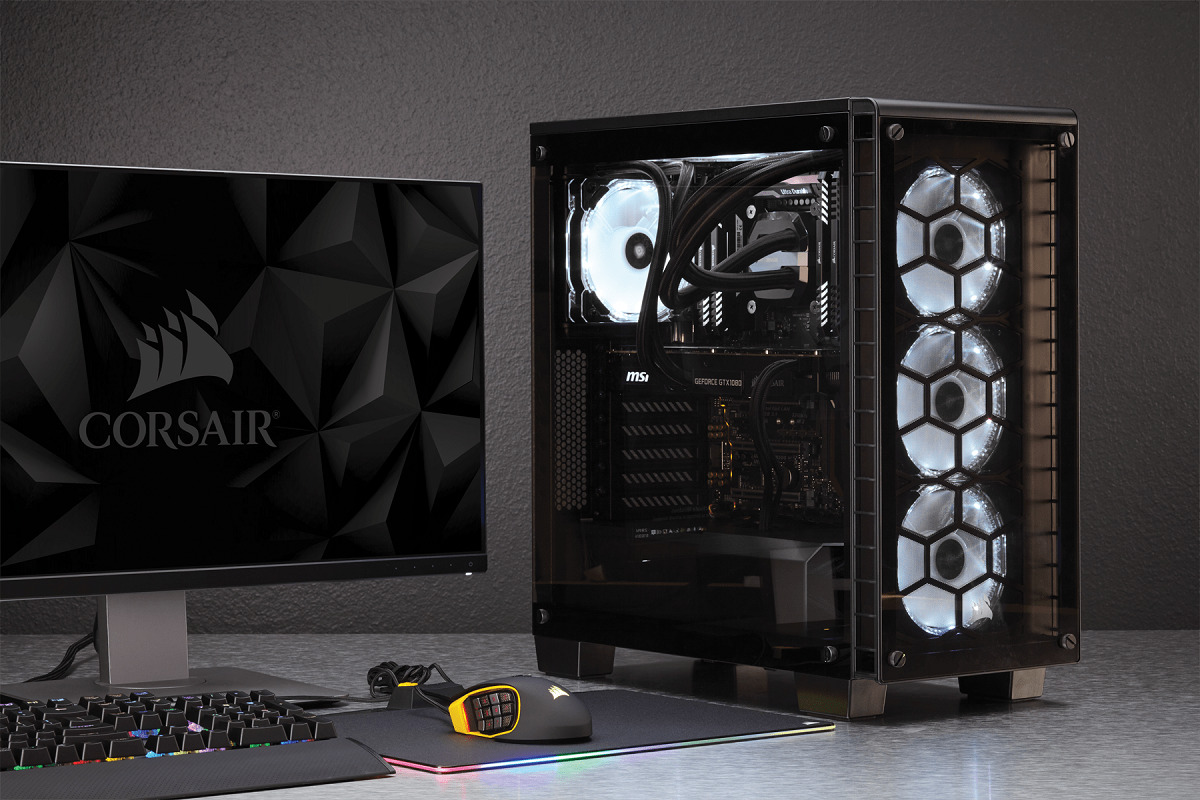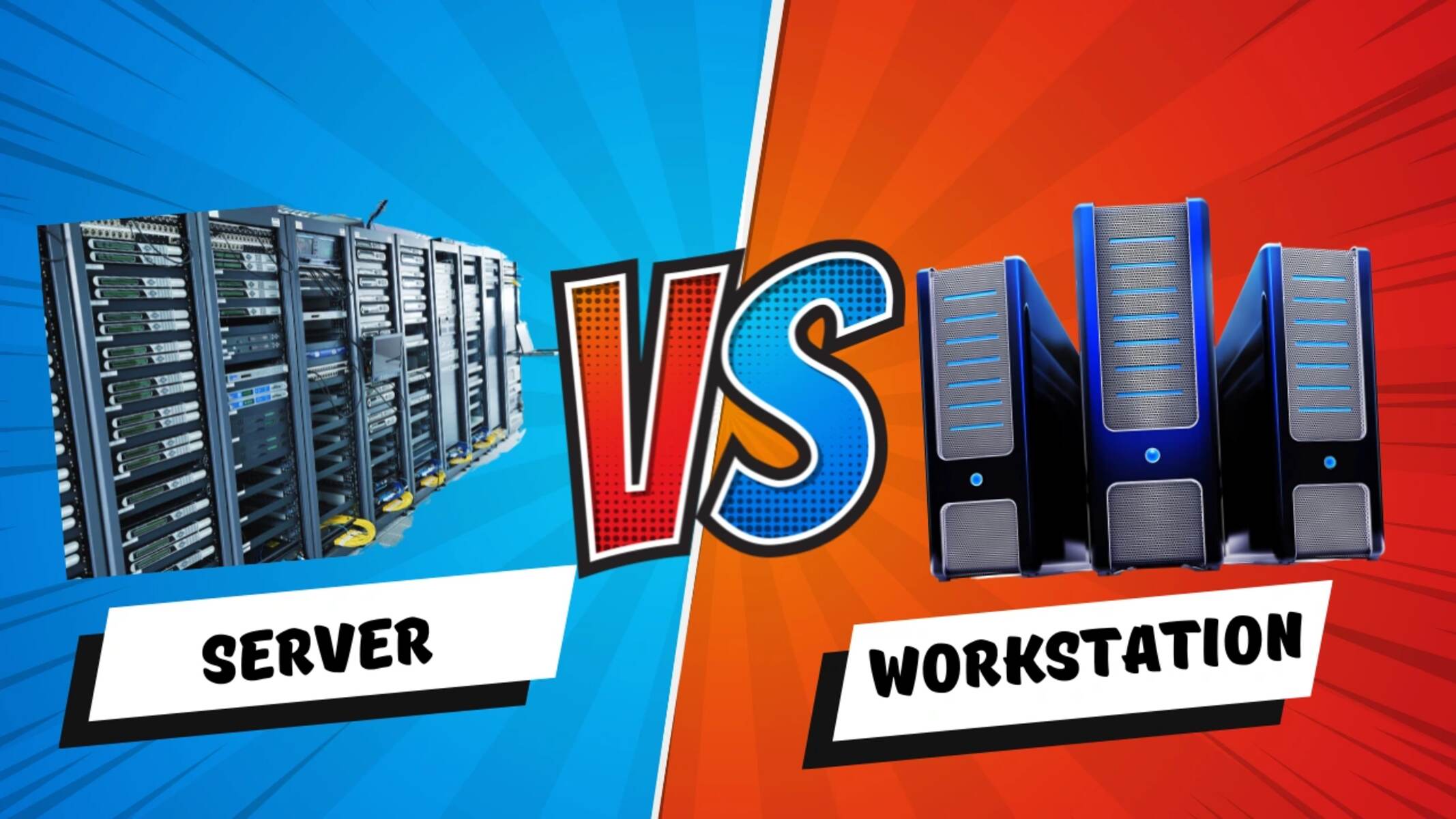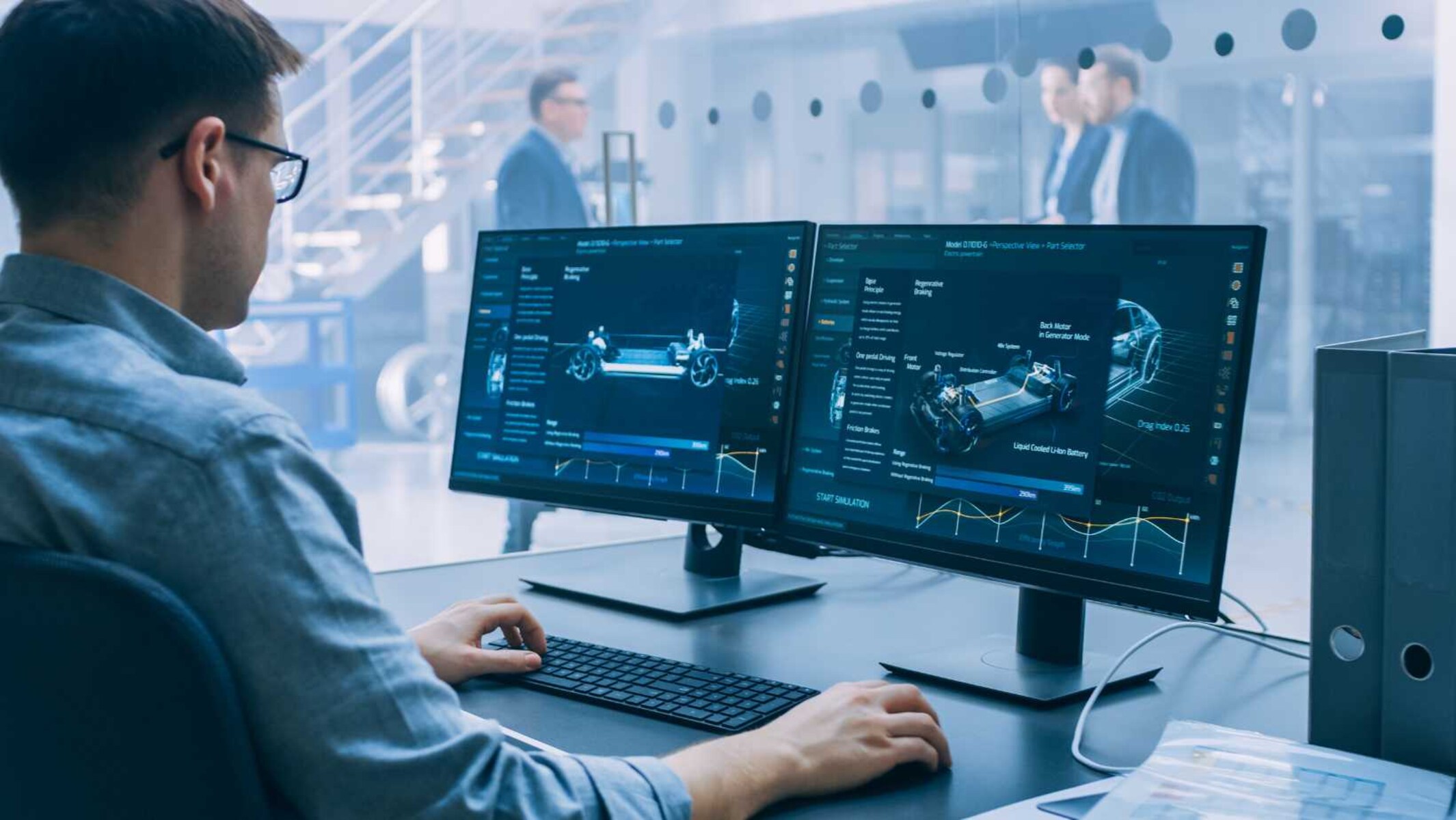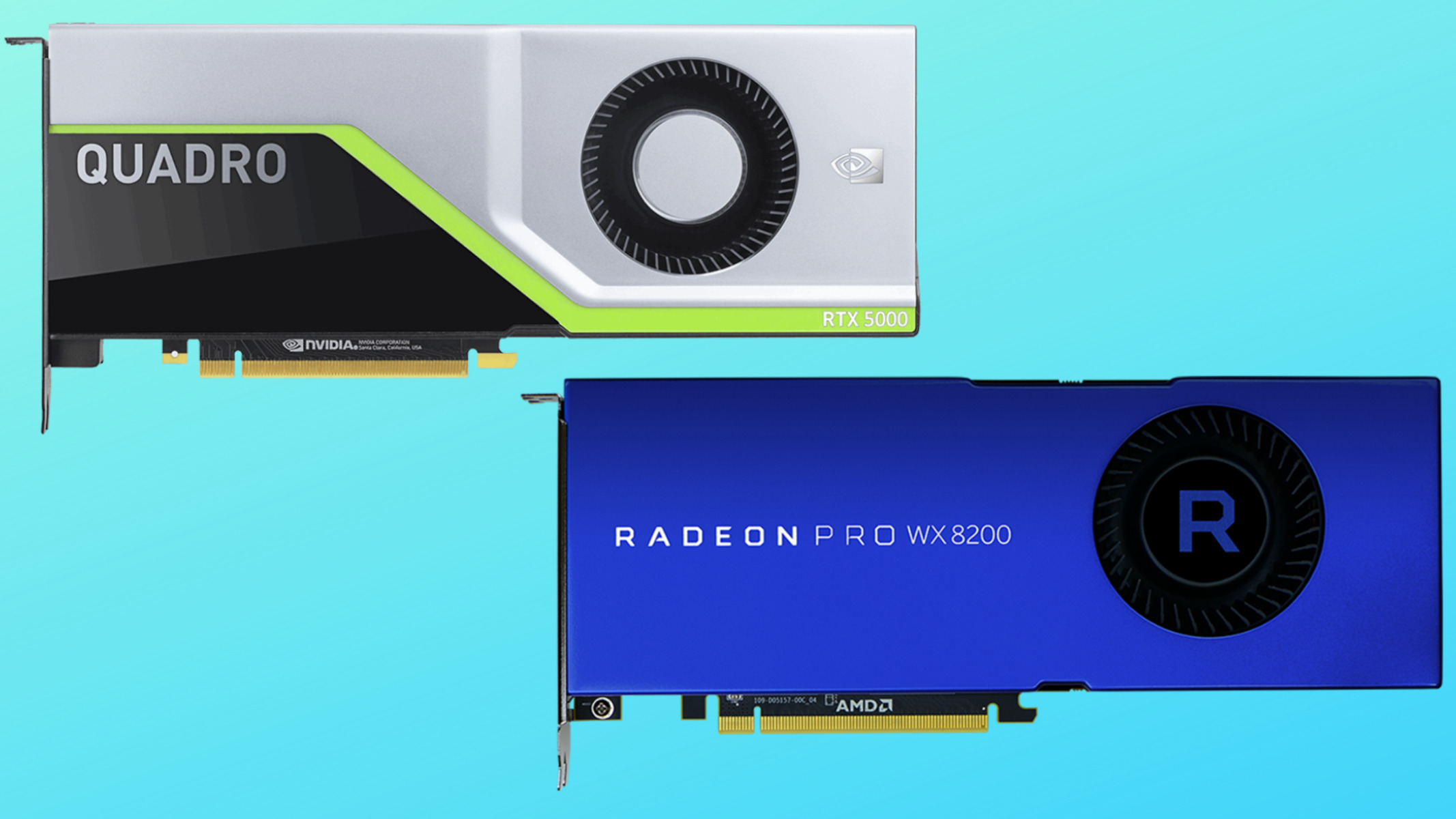Introduction
Welcome to the world of CAD workstations! In today’s digital age, computer-aided design (CAD) has become an essential tool for architects, engineers, designers, and other professionals. A CAD workstation is a powerful computer system designed to handle the demanding computational and graphical requirements of CAD software.
With the rapid advancement of technology, CAD workstations have evolved to provide seamless and efficient performance. These workstations are specifically tailored to optimize productivity and enhance the user experience when working with complex 2D and 3D designs.
In this article, we will delve into the various components and considerations that make up a CAD workstation. Whether you are a seasoned CAD professional looking to upgrade your current setup or a beginner venturing into the world of CAD, this guide will provide you with valuable insights to make informed decisions.
We will explore the key components of a CAD workstation, including processors, graphics cards, RAM, storage, display considerations, input devices, software compatibility, cooling, power requirements, and ergonomic considerations. By understanding these components and their importance, you can create an optimized workstation that best suits your needs and increases your productivity.
Before we dive into the details, it’s essential to note that there is no one-size-fits-all approach when it comes to CAD workstations. Every individual’s requirements may vary based on the complexity of their projects, the software they use, and their own personal preferences. However, by considering the factors outlined in this guide, you can build or choose a CAD workstation that meets your specific needs.
Now, let’s embark on this journey to explore the world of CAD workstations and uncover the secrets to a powerful and efficient setup.
Definition of CAD Workstation
Before diving into the intricacies of a CAD workstation, it’s important to understand what exactly it is. A CAD workstation is a specialized computer system specifically designed to handle the computational and graphical demands of CAD software.
CAD, short for computer-aided design, is a technology that enables professionals in various industries to create, modify, analyze, and optimize 2D and 3D designs. CAD software provides a wide range of tools and features that aid in the creation of precise and detailed designs, from architectural blueprints to mechanical parts.
A CAD workstation goes beyond the capabilities of a regular computer because it is optimized to handle the complex calculations and graphics rendering required by CAD software. It is equipped with powerful processors, graphics cards, ample amounts of RAM, and high-speed storage to ensure smooth and efficient operation.
One of the key differentiators of a CAD workstation is its emphasis on graphics performance. CAD software relies heavily on 3D modeling and rendering, and therefore, the workstation must have a high-performance graphics card capable of handling complex visualizations and real-time rendering.
Additionally, CAD workstations are built to handle large data sets and complex calculations. They have more RAM capacity to accommodate the memory-intensive operations performed by CAD software. This enables professionals to work on large-scale projects without any performance bottlenecks or slowdowns.
Furthermore, CAD workstations often come with multiple high-resolution monitors or ultra-wide displays to provide professionals with ample screen real estate for multitasking and viewing intricate details. This is especially useful when working on large-scale architectural designs or intricate 3D models.
In summary, a CAD workstation is a specialized computer system that is tailored to meet the demanding requirements of CAD software. It provides the necessary processing power, graphics capabilities, memory capacity, and display options to ensure smooth and efficient operation for professionals in the fields of architecture, engineering, design, and more.
Components of a CAD Workstation
A CAD workstation comprises various components that work together to provide the performance and functionality required for efficient CAD operations. Understanding these components is crucial for building or selecting the right workstation for your needs. Let’s delve into the key components of a CAD workstation:
1. Processors: The processor, or CPU (Central Processing Unit), is the brain of the workstation. For CAD applications, a multi-core processor with high clock speeds is recommended to handle the complex calculations involved in 2D and 3D modeling. Intel Core i7 or i9 and AMD Ryzen processors are popular choices among CAD professionals.
2. Graphics Cards: A powerful graphics card, or GPU (Graphics Processing Unit), is essential for CAD workstations. High-end GPUs with dedicated video memory are capable of rendering complex 3D models and handling real-time visualizations. NVIDIA Quadro and AMD Radeon Pro are popular choices for CAD professionals.
3. RAM: Random Access Memory, or RAM, is crucial for handling large design files and complex simulations. CAD workstations should have a minimum of 16GB of RAM to avoid memory bottlenecks. More demanding projects may require 32GB or even 64GB of RAM for optimal performance.
4. Storage: CAD workstations typically require fast and reliable storage options. SSDs (Solid-State Drives) are recommended for faster data access and quicker software loading times. Additionally, consider using a separate hard drive or network-attached storage (NAS) for data backup and project storage.
5. Display: A high-resolution display with accurate color reproduction is crucial for CAD workstations. Dual monitors or ultra-wide displays provide more screen real estate and enhance productivity by allowing simultaneous viewing of design files, palettes, and reference materials.
6. Input Devices: CAD workstations require precise input devices for accurate design work. A high-quality mouse with programmable buttons and a ergonomic design is essential. Additionally, consider using a graphics tablet or stylus for more precise input and specialized software features.
7. Cooling: CAD workstations generate significant heat during intensive operations. Adequate cooling with ventilation or liquid cooling solutions is necessary to prevent overheating and ensure the longevity of the workstation’s components.
8. Power Supply: A robust power supply unit (PSU) is necessary to handle the power demands of a CAD workstation. Ensure that your workstation has a PSU with enough wattage and the necessary connectors to support all the components.
9. Workstation Case: A sturdy and well-ventilated workstation case is important to provide proper airflow and protect components from damage. Opt for a case that allows for easy access and upgradeability.
In summary, the components of a CAD workstation include processors, graphics cards, RAM, storage, displays, input devices, cooling solutions, power supplies, and workstation cases. Each component plays a vital role in ensuring optimal performance and functionality for CAD professionals.
Processors and Graphics Cards for CAD Workstations
When it comes to CAD workstations, the choice of processors and graphics cards is crucial for ensuring smooth and efficient performance. Let’s take a closer look at these key components:
Processors: CAD software heavily relies on the computational power of the CPU. When choosing a processor for your CAD workstation, consider factors such as clock speed, core count, and cache size. For single-threaded CAD applications, a CPU with high clock speeds, such as an Intel Core i9 or AMD Ryzen 9, is recommended. On the other hand, for multi-threaded applications that can take advantage of multiple cores, consider processors like the Intel Core i7 or AMD Ryzen 7 series.
Keep in mind that CAD operations involve complex calculations and modeling, so it is important to invest in a capable processor to avoid bottlenecks and ensure smooth performance.
Graphics Cards: CAD workstations require powerful GPUs to handle the demanding visual requirements of 2D and 3D modeling, rendering, and simulation tasks. A dedicated workstation-grade graphics card from NVIDIA or AMD, such as the NVIDIA Quadro or AMD Radeon Pro series, is highly recommended. These specialized GPUs offer greater stability, compatibility, and support for CAD applications compared to consumer-grade GPUs.
For CAD workstations, it is important to consider the amount of dedicated video memory (VRAM) on the graphics card. Larger VRAM capacity allows for better handling of complex models and larger data sets. Additionally, look for graphics cards that support hardware acceleration and real-time rendering technologies, such as NVIDIA’s CUDA or AMD’s Radeon ProRender, to further enhance performance.
It’s worth noting that some CAD software may have specific recommendations or certification for certain graphics cards. Consult the software manufacturer’s guidelines or documentation to ensure compatibility and optimal performance.
When choosing processors and graphics cards, it is important to strike the right balance between budget and performance. The more demanding your CAD projects are, the more powerful the processors and graphics cards your workstation will require. Additionally, consider future software advancements and the longevity of your workstation when making these decisions.
It’s also worth mentioning that CAD workstations can benefit from multiple graphics cards in certain scenarios. Some CAD applications support GPU acceleration and can distribute processing tasks across multiple cards, improving performance and reducing render times. However, this requires specific software support and compatible hardware configurations.
In summary, processors and graphics cards are key components of CAD workstations. Invest in a powerful CPU and a workstation-grade graphics card to ensure smooth performance, efficient modeling, and realistic visualizations. Choose components that meet both your current and future needs to get the most out of your CAD workstation.
RAM and Storage Requirements
RAM and storage play crucial roles in the performance and efficiency of CAD workstations. Let’s explore the requirements for these components:
RAM: CAD software can be resource-intensive, especially when working with large models or complex simulations. Sufficient RAM is essential to ensure smooth operation and avoid performance bottlenecks. For most CAD professionals, a minimum of 16GB of RAM is recommended. This allows for multitasking, efficient file handling, and seamless navigation through complex designs.
However, for more demanding projects or for those working with simulation software, it is advisable to have 32GB or even 64GB of RAM. This provides ample room for the software to store and process large datasets and perform memory-intensive operations without slowing down the system.
Keep in mind that RAM can be upgraded later, so it is worth considering future scalability when configuring your workstation. Additionally, ensure that the motherboard supports the desired RAM capacity and has available slots for expansion.
Storage: When it comes to storage, CAD workstations benefit from fast and reliable options. Solid-State Drives (SSDs) have become the standard choice for CAD workstations due to their faster data access times, quicker software loading, and smoother file operations.
For optimal performance, use SSDs for the operating system, CAD software, and frequently accessed files. This ensures that the software and data are readily available, reducing load times and enhancing overall responsiveness. Consider NVMe SSDs for even faster read and write speeds, especially when dealing with large file sizes.
As CAD projects generate large files, it is important to have ample storage capacity. Consider a combination of an SSD for performance-critical files and a larger traditional hard drive or network-attached storage (NAS) device for long-term storage and backups.
Cloud storage can also be a viable option for collaboration and remote access to files, although it is important to ensure the security and reliability of the chosen cloud service provider.
In summary, having sufficient RAM and fast storage is crucial for CAD workstations. Aim for a minimum of 16GB of RAM, but consider higher capacities for more demanding projects. Utilize SSDs for fast and efficient file handling, and consider a combination of different storage options to accommodate both performance-critical files and long-term storage needs. With the right RAM and storage configuration, you can ensure a smooth and efficient CAD workflow.
Display Considerations
The display is a critical component of a CAD workstation as it directly impacts your ability to visualize and work with intricate designs. Here are some important considerations when choosing a display for your CAD workstation:
Resolution: High resolution is essential for CAD workstations as it allows for precise and detailed viewing of designs. Look for displays with at least 1080p (Full HD) resolution or higher. Higher resolutions, such as 1440p (2K) or 4K, provide even greater clarity and allow for more design elements to fit within the screen.
Size: Consider the display size based on your workflow and available desk space. Larger displays provide more screen real estate, allowing you to view complex designs without needing to zoom or scroll extensively. 27-inch or larger displays are popular choices among CAD professionals, but ensure that your desk can accommodate the size comfortably.
Color Accuracy: CAD work often involves precise color representation, especially for architectural designs or product rendering. Look for displays with accurate color reproduction and support for wide color gamuts, such as sRGB or Adobe RGB. This ensures that the colors displayed on the screen are true to the original design.
Dual Monitors or Ultrawide Displays: Many CAD professionals prefer using multiple monitors or ultrawide displays to enhance productivity. Dual monitor setups allow for simultaneous viewing of multiple design files, reference materials, or software tools, reducing the need to constantly switch between windows. Ultrawide displays provide a similar benefit with a single large screen, offering an immersive viewing experience without the bezel interruptions present in a multi-monitor setup.
Connectivity: Ensure that the display has the necessary connectivity options, such as HDMI, DisplayPort, or USB-C, to seamlessly connect to your CAD workstation. Also, consider displays that support daisy-chaining if you plan to use multiple monitors.
Adjustability: Ergonomic considerations are crucial for long hours of CAD work. Look for displays with adjustable stands that allow for ergonomic positioning, including height adjustment, tilt, and swivel. This helps minimize strain on your neck, back, and eyes during prolonged work sessions.
Additional Features: Some displays offer extra features like built-in ambient light sensors, blue-light filters, or flicker-free technology to reduce eye strain and provide a more comfortable viewing experience. Consider these features if you are sensitive to eye fatigue or work in varied lighting conditions.
In summary, when choosing a display for your CAD workstation, prioritize resolution, color accuracy, size, and connectivity. Consider dual monitors or ultrawide displays for increased productivity, and select a display with adjustable features to ensure ergonomic comfort. By choosing the right display, you can enhance your CAD workflow and accurately visualize your designs.
Input Devices for CAD Workstations
When it comes to CAD workstations, having the right input devices is crucial for precise and efficient design work. Here are some key considerations when selecting input devices for your CAD workstation:
Mouse: A high-quality mouse is a fundamental input device for CAD professionals. Look for a mouse with programmable buttons, ergonomic design, and precise tracking. Programmable buttons can be customized to perform commonly used commands or macros, saving time and enhancing productivity. Additionally, an ergonomic design ensures comfort during extended periods of use, reducing the risk of repetitive strain injuries.
Graphics Tablet or Stylus: For more precise input and to mimic traditional pen and paper drawing, consider using a graphics tablet or stylus. These input devices allow for more natural and precise sketching or drawing in CAD software. They are particularly useful for architectural or product design work that requires intricate detailing and precise lines.
Keyboard: While not as specific to CAD work as the mouse or graphics tablet, having a reliable and comfortable keyboard is still important for efficient input. Look for keyboards with a comfortable key mechanism and ergonomic design. Some CAD professionals may prefer keyboards with programmable keys or customizable key layouts to streamline workflow and execute specific commands more easily.
3D Input Devices: For CAD professionals working extensively with 3D modeling or sculpting, 3D input devices such as 3D mice or haptic devices can be valuable additions. These devices enable intuitive control over 3D models, allowing for easier navigation and manipulation in a three-dimensional environment.
Touchscreen Monitors: Touchscreen monitors provide an alternative method of input, especially for those who prefer a more tactile approach. While not as commonly used in CAD workflows, touchscreen monitors can be beneficial for certain tasks, such as selecting and dragging objects or manipulating design elements directly on the screen.
Ease of Use: Consider the ease of use and familiarity of input devices. Choose devices that you find comfortable and intuitive to work with. It’s important to feel confident and in control when using your input devices, as it directly impacts your productivity and the quality of your work.
Software Compatibility: Ensure that the input devices you choose are compatible with the CAD software you use. Some software may have specific requirements or recommendations for input devices, such as pressure sensitivity for drawing or compatibility with specialized toolsets.
Overall, selecting the right input devices for your CAD workstation is essential for efficient, accurate, and comfortable design work. Consider your specific needs, ergonomic requirements, and preferences when choosing a mouse, graphics tablet, keyboard, or other input devices that best suit your workflow.
CAD Software Compatibility
When building or selecting a CAD workstation, it is important to consider software compatibility. Different CAD software packages have varying system requirements and may perform differently on different hardware configurations. Here are some key considerations when it comes to CAD software compatibility:
System Requirements: Start by checking the official system requirements of the CAD software you intend to use. These requirements typically specify the minimum and recommended hardware specifications, including the operating system, CPU, RAM, and graphics card. Ensure that your workstation meets or exceeds these requirements for optimal performance and compatibility.
GPU Acceleration: Many CAD software packages utilize GPU acceleration for enhanced performance in tasks such as rendering or simulation. Some software may have specific recommendations or certifications for graphics cards that offer the best compatibility and performance. Check the software documentation or the manufacturer’s website for a list of recommended or certified graphics cards to ensure compatibility and take full advantage of GPU acceleration.
File Formats and Interoperability: CAD software packages support different file formats for importing and exporting designs. Ensure that your chosen CAD software is compatible with the file formats commonly used in your industry or by your collaborators. This enables seamless sharing of designs and collaboration with other professionals or software packages.
Plug-ins and Extensions: CAD software often supports plug-ins or extensions that provide additional features or compatibility with specific tools or workflows. Consider the availability and compatibility of these plug-ins if they are vital to your specific needs. Check the software’s official marketplace or developer community for a wide range of plug-ins and extensions that can enhance your CAD capabilities.
Operating System Compatibility: Verify that your chosen CAD software is compatible with your preferred operating system. CAD software packages are generally available for both Windows and macOS, but double-check to ensure compatibility with your specific operating system version.
Updates and Support: Stay informed about software updates and compatibility with your hardware. CAD software companies regularly release updates that improve performance, introduce new features, and address compatibility issues with different hardware configurations. Regularly update your software to benefit from these improvements and ensure ongoing compatibility with your workstation.
User Community and Resources: Consider the software’s user community and available resources, such as forums, tutorial videos, knowledge bases, and user groups. A vibrant user community can provide valuable support, tips, and guidance on hardware compatibility, troubleshooting, and optimizing your CAD workflow.
By ensuring compatibility with your chosen CAD software, you can minimize compatibility issues, optimize performance, and unleash the full potential of your CAD workstation.
Cooling and Power Considerations
Efficient cooling and proper power management are crucial for the optimal performance and longevity of a CAD workstation. Excessive heat can lead to performance throttling, system instability, and hardware damage, while inadequate power supply can result in system crashes or instability. Here are some important considerations when it comes to cooling and power for your CAD workstation:
Cooling Solutions: CAD workstations generate a significant amount of heat, especially during resource-intensive tasks such as 3D rendering or simulations. Adequate cooling is essential to prevent overheating and maintain optimum performance. Consider options such as air cooling or liquid cooling, depending on your requirements and budget.
Air cooling, achieved through case fans and heat sinks, is a cost-effective solution suitable for most CAD workstations. Ensure proper airflow within the case by using strategically positioned fans that intake cool air and exhaust hot air. Clean the fans and heatsinks regularly to prevent dust buildup, which can impede airflow and increase temperatures.
Liquid cooling, or water cooling, is a more efficient cooling solution but is typically more expensive and complex to install. It involves the use of water blocks, radiators, and pumps to transfer heat away from the components. Liquid cooling systems offer better heat dissipation and can be beneficial for workstation setups that handle particularly demanding CAD tasks.
Power Supply Unit (PSU): A reliable and sufficient power supply is necessary to ensure stable and consistent power delivery to your CAD workstation. Consider the power requirements of all the components in your workstation, including the CPU, graphics card, drives, and other peripherals.
Choose a PSU with a wattage rating that surpasses the combined power requirements of your components to allow for headroom and future upgrades. It is also advisable to select a PSU with an efficiency rating, such as 80 PLUS Bronze or higher, as it ensures efficient power delivery and reduces unnecessary power wastage.
Cable Management: Proper cable management not only improves the aesthetics of your workstation but also aids in airflow and cooling. Organize and secure the cables in a way that allows for unobstructed airflow within your workstation’s case. This helps prevent the accumulation of heat and reduces the risk of cable interference with cooling components.
Power Backup and Surge Protection: CAD workstations often handle critical projects, and unexpected power outages can result in data loss and interruptions in productivity. Consider investing in an uninterruptible power supply (UPS) to provide backup power during outages and protect your workstation from sudden power surges or voltage fluctuations. Additionally, use surge protectors to safeguard your workstation and sensitive components from power spikes that can damage the hardware.
Regular Maintenance: To ensure optimal cooling and power management, perform regular maintenance tasks. Clean your workstation regularly to remove dust and debris that can obstruct airflow and cause overheating. Check fans and cooling components periodically to ensure they are functioning properly. Also, inspect power cables for any signs of wear or damage and replace them if necessary.
By paying attention to cooling and power considerations, you can create a stable and reliable CAD workstation that operates at optimum temperature levels, reduces the risk of hardware damage, and ensures uninterrupted productivity.
Ergonomics and Workstation Setup
Ergonomics plays a crucial role in maintaining comfort, reducing strain, and increasing productivity during long hours of CAD work. Considering ergonomic principles when setting up your workstation can have long-term benefits for your health and work performance. Here are some key considerations for creating an ergonomic CAD workstation:
Chair: Invest in an ergonomic chair that provides adequate lumbar support, adjustable height and armrests, and promotes proper posture. A well-designed chair helps reduce back and neck strain, maintaining comfort during extended work sessions.
Desk: Select a desk that allows for comfortable positioning of your keyboard, mouse, and monitor(s). The desk height should be adjustable to match your chair’s height, ensuring your forearms are parallel to the floor when using the keyboard and mouse. A spacious and clutter-free desk surface allows for organized placement of input devices, reference materials, and other tools.
Monitor Height and Placement: Position your monitor at eye level to avoid strain on your neck and promote good posture. Use monitor stands, adjustable monitor arms, or risers to achieve the proper height. Additionally, position the monitor at a comfortable distance to reduce eye fatigue and promote a clear view of the screen.
Keyboard and Mouse Placement: Position your keyboard and mouse in a way that allows for a relaxed and natural posture. Keep your wrists straight and avoid excessive bending or reaching. Consider using a wrist rest or an ergonomic keyboard and mouse to further reduce strain on your hands and wrists.
Lighting: Ensure proper lighting in your workstation area to reduce eye strain and promote visual clarity. Avoid glare on the monitor by positioning it away from direct light sources or using anti-glare screens. If possible, take advantage of natural light, but supplement it with appropriate ambient or task lighting to avoid eye strain caused by excessive contrast.
Footrest and Leg Positioning: Use a footrest if your feet are not comfortably touching the floor while seated. This helps maintain proper blood circulation and reduces strain on your legs. Adjust the height of your chair, so your thighs are parallel to the floor, promoting better circulation and reducing strain on your lower body.
Cable Management: Maintain an organized and safe workspace by properly managing your cables. Secure and route cables away from foot traffic and ensure they do not cause obstruction or risk of tripping. Using cable clips, ties, or sleeves can keep cables neatly organized and prevent accidents.
Regular Breaks and Stretching: Take regular breaks during your work session to stretch and rest your eyes. Prolonged sitting and constant focus can lead to muscle stiffness and eye strain. Incorporate stretching exercises targeting your neck, back, arms, and wrists to alleviate tension and reduce the risk of repetitive strain injuries.
By following these ergonomic principles and implementing an appropriate workstation setup, you can reduce the risk of musculoskeletal issues, fatigue, and discomfort associated with prolonged CAD work. A well-designed workstation promotes better posture, optimizes your work efficiency, and contributes to your overall well-being. Remember to always listen to your body’s needs and make adjustments accordingly.
Conclusion
Building or selecting a CAD workstation involves considering various components and factors to ensure optimal performance and productivity. From processors and graphics cards to RAM and storage requirements, each component plays a vital role in the smooth operation of CAD software.
The choice of a high-performance processor and a dedicated graphics card tailored for CAD workstations ensures efficient handling of complex calculations and realistic rendering. Ample RAM and fast storage options enhance multitasking capabilities and quick access to large design files.
A carefully chosen display with high resolution and accurate color reproduction allows for detailed visualization of designs, while ergonomic input devices like mice, keyboards, and graphics tablets ensure precise control and efficient input for design work.
Considering software compatibility is also essential to ensure smooth integration with your preferred CAD software, as well as interoperability with other file formats and software tools.
In addition, cooling and power considerations, including proper ventilation, cooling solutions, and reliable power supply, help maintain optimal performance and longevity of components within your CAD workstation.
Ergonomics should not be overlooked, as it directly impacts your comfort and well-being during long hours of CAD work. Creating an ergonomic workstation setup with proper seating, desk height, monitor placement, and adequate lighting not only enhances productivity but also reduces the risk of musculoskeletal issues and fatigue.
By carefully considering and selecting the right components, ensuring compatibility, and maintaining an ergonomic setup, you can create a powerful and efficient CAD workstation that meets your specific requirements and optimizes your design workflow.
Remember, as technology evolves, it is crucial to stay updated with the latest advancements in hardware and software to ensure that your CAD workstation remains efficient and able to handle the evolving demands of your projects.







